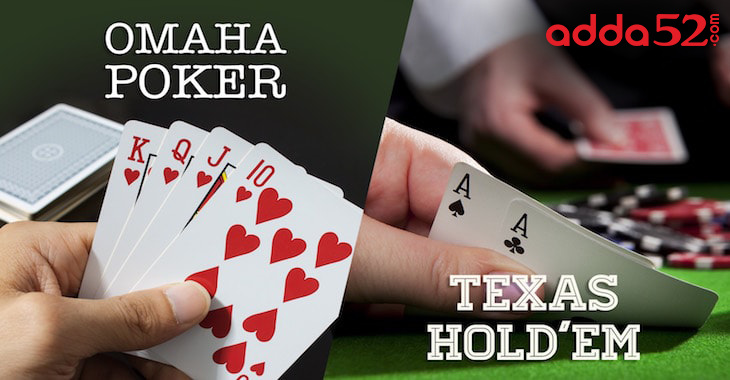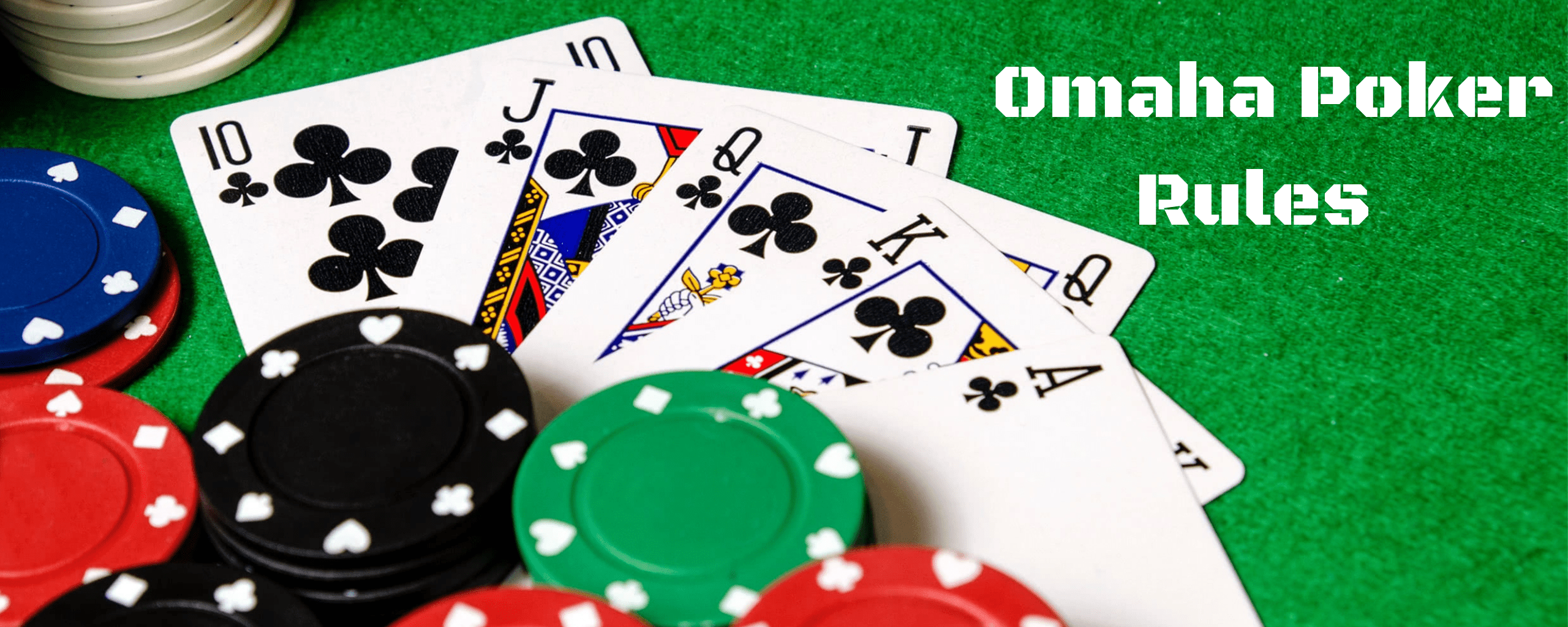Omaha 8, also known as Omaha Eight or Better, or Omaha high low split ('Hi/Lo'), is a split pot game. The best high hand wins half of the pot, and the best low hand wins the other half of the pot. Much like its cousin, Pot Limit Omaha, Omaha 8 or Better involves four hole cards for each player. How to play Omaha; Omaha is a complicated game and you can be winning one minute and losing badly the next. Here we are going to look at strategy for basic Omaha. For Omaha Hi-Lo look here. Don’t forget that Omaha is usually either Limit or Pot Limit (PLO), which means betting is controlled by the amount you can bet, as opposed to raising any. Pot Limit Omaha Poker - A player can bet what is in the pot (i.e. ₹100 into a ₹100 pot). This is the most popular form of Omaha Poker. No Limit Omaha Poker - A player can bet any amount, up to all of their chips. Fixed Limit Omaha Poker - There is a specific betting limit applied in each game and on each round of.
- How To Play Omaha Card Game
- How To Play Omaha High Low
- How To Play Omaha 8 Or Better Poker
- How To Play Omaha Pot Limit
- Games Desires Omaha Poker
Omaha is an exciting poker variant, and although it bears a striking similarity to Texas Hold’em, it stands in a class of its own.
Learn how to play Omaha Hi-Lo here. Omaha Rules Overview. Omaha is usually played with either pot-limit or limit betting rules. For more on the different betting structures in poker, check out our guide to Poker Betting Rules. Pot Limit Omaha is commonly called “PLO”, and is the second-most popular poker game in the world, behind Texas Hold. The rules of Omaha Poker are virtually identical to the rules of Texas Hold'em poker. It's a community card game, there are blinds and four rounds of betting, the highest 5-card poker wins. There are two basic differences between Hold'em and Omaha: Each player gets 4 hole cards in Omaha (vs.
Once poker players have understood the basic rules of playing Omaha Poker and played a few games for real money, they would want to know the secrets of playing a winning game of Omaha Poker.
Here are 10 tricks to winning at Omaha Poker.
- Know the Rules Omaha players will naturally be disappointed when the read the first secret to playing a winning game of Omaha Poker – know the rules. However, they must understand that it is literally impossible to understand any Omaha Poker strategy until and unless they have thoroughly understood the rules of Omaha Poker at the deepest level.
- Mark the DifferenceMany beginners play a miserable game of Omaha Poker because they do not realize the difference between Hold’em and Omaha. Players of Omaha have to create a strong five-card hand using two hole cards and three community cards, and this is what makes Omaha Poker more challenging than Texas Hold’em.
- Choosing Best Starting HandsA standard deck of 52 playing cards can be used to create 5,277 combinations, provided only four cards are used and suited combinations are not considered. Successful Omaha players understand these combinations very well.
- All Four Cards Are ImportantWhile it is true that players can use only two of their hole cards to create the strongest hand, they must carefully study all the four cards in their starting hand. Thinking of the various combinations that can be created with these four cards will help players understand better their odds of winning.
- Ace Pair Having a pair of Aces in one’s starting hands is something to be happy about. For instance, if players are dealt an Ace of Spades, an Ace of Diamonds, a King of Spades, and a King of Diamonds, they will do very well on the flop. An excellent Omaha Poker strategy would be to play a starting hand with an Ace pair.
Learn the basic Omaha Poker Rules
This video has been provided by online-casinos.com
- Aces Are Not Everything Simultaneously, an ace is not everything and it definitely does not promise the jackpot. While having an Ace in the starting hand is always beneficial, a lot depends on the other cards in the hand. Even if players get an Ace pair, if they have cards such as Five of Clubs and Nine of Hearts with their Ace pair, they will not be able to win. However, if the opponent does not have an Ace in his/her starting hand, the above-mentioned hand can be played. A list of great starting hands with Ace pairs would include AAQQ, AA99, and AAJJ, to mention just a few.
- Kings and Queens Omaha players who are dealt Kings and Queens in their starting hands can also play their hands, provided they have another strong pair. For instance, a King of Diamonds, a King of Spades, a Queen of Diamonds, and a Queen of Spades comprises a great starting hand, but a King of Diamonds, a King of Spades, a Nine of Spades, and a Nine if Diamonds is not really a good hand to play. Players can consider playing starting hands with pairs of cards, suited connectors, flushes, and connectors.
- The Best Can Be the Worst Sometimes players might receive cards that look excellent, but have absolutely no potential of winning. For instance, beginners will jump for joy if they get four cards from the same suit or a three of a kind, but such hands are useless to Omaha players because they can use only two of their hole cards and 3 community cards to create a winning hand. Such hands are, therefore, better folded.
- Identify Worthless Hands Omaha players must understand that they cannot play all starting hands. If they get dealt a hand that has no potential of becoming a winner, they had better fold. Players must learn the art of distinguishing worthless hands from valuable starting hands.
- Best Omaha Starting Hand The best Omaha starting hand can, therefore, be defined as a hand comprising four great cards that can work collaboratively to create a strong poker hand for the player. Players should look for card pairs, complimentary cards, suited cards, connected cards, and even a pair of deuces.
Omaha Poker is fast becoming one of the most popular variations of poker worldwide. It’s a game that’s filled with action and strategy, making it exciting and more interesting to both beginners and professional poker players. Since Omaha Poker has a similarity with Texas Hold’em Poker, learning it would be easy for most players.
What is Omaha Poker?
You’ve seen the name and you’ve heard poker players rave about it. Now it’s time to learn how to play it. For players who start out playing Texas Hold’em Poker, Omaha is often the next game to learn. It bears a natural similarity to Hold’em in the way the game is played.
There are different variations of the game and the one we will be focusing on here is Pot-Limit Omaha (PLO). If you understand the rules for Texas Hold’em Poker then you’ll be able to pick up Omaha Poker quite easily. Both are community card poker games that consists of hole cards and community cards that are shared by all players.
How To Play Omaha Card Game
Before we proceed with the rules of Omaha Poker, let’s take a look at the difference between Omaha and Texas Hold’em.

What is the difference between Omaha Poker and Texas Hold’em Poker?In both variations, players are dealt their hole cards face down and players use those cards together with the five community cards (the flop, turn and river) to make the best poker hand possible. The one big difference between Omaha and Texas Hold’em is that in Omaha, players are dealt FOUR hole cards and from those four cards, they must choose two hole cards to combine with the community cards to make a five-card poker hand.
It is important to note that the Omaha game rules require players to use TWO of their hole cards and three community cards to build a hand whereas in Hold’em Poker, players can use two, one or none of their hole cards. Hand rankings for both games are similar and the best hand wins the game.
Related: Poker Hand Rankings Explained
How To Play Omaha Poker
Players who are new to Omaha Poker often make the mistake of forgetting the golden rule of the game which is the use TWO of the four hole cards together with three community cards to make a hand.
For example, a player holding 3♠ 5♣ 9♦ A♥ might look at a board with 2♠ 5♥ 10♥ Q♥ K♥ and believe he has made an Ace-High Flush. In reality, this player only has a pair of fives and not a flush at all. Once again, players MUST use two hole cards from their hand and three community cards to make the best hand possible.
The mechanics of betting in Omaha Poker remains the same as Texas Hold’em Poker. There will be a small blind and big blind, as well as a rotating dealer button. Each round will have four betting rounds which would be the Preflop, Flop, Turn and the River. For an overview of the different phases of the game, check out our guide on “How to Play Poker”.
Hand Values: Texas Hold’em vs Omaha Poker
Compared to Texas Hold’em, Omaha Poker or specifically Pot-Limit Omaha (PLO) is known as an “action game”, making it popular amongst the high-stakes players. Players begin with four hole cards which gives them a much wider range of hands. The addition of two hole cards increases the hand values, making it more likely to hit “the nuts” or make the highest possible hand more frequently.
Pot-Limit Omaha (PLO) players are dealt SIX different two-card combinations with the four hole cards which they can use to make the best hand. It comes as no surprise that there will be an increase in the number strong hands which makes for more action and dramatic showdowns in Omaha Poker.
In a game of Texas Hold’em, hitting a three of a kind or a straight can be considered a very strong hand. In Omaha, those hands will often be beat by something stronger. It is because of this that Omaha Poker is a becoming more and more popular amongst the poker community.
What Are The Rules For Omaha Poker?
Unlike No-Limit Hold’em, the Pot-Limit Omaha (PLO) of the game only allows players to bet up to the size of the pot. Similar to Texas Hold’em, the minimum bet that can be called in Omaha is the equivalent of one big blind. A game that is $1/$2 PLO would mean that a minimum bet a player can make is $2. In a no-limit game, a player can at any point go All-in but in Pot-Limit Omaha the maximum bet allowed would be the current size of the pot.
Calculating Pot-SizeWhen playing Pot-Limit Omaha poker online, pot sizes and maximum bets are automatically calculated. Similarly, if playing at casinos, the math will be taken care of by the dealer. If you do find yourself in a situation where you have to do the math, things can get a bit tricky. If the current pot size is $10, the player who is first to act can make a maximum bet of $10. Subsequent players might just call and if a player wishes to raise then that’s where it gets tricky.
Example 1: There’s $15 in the pot and you’re the first to act. You can either Check or Bet. If you would like to make a bet, you will be able to bet anywhere from as little as $2 which is the big blind up to the full amount of the pot which is $15.
Example 2: There’s $15 in the pot pre-flop and you’re second to act on the flop. The first player bets $10. Now you have the option to Fold, Call or Raise. If you would like to call then it’s $10. If you would like to raise, the minimum raise amount must be equal to the previous bet which is $10. The maximum raise would be the amount of the pot. In order to figure this out there will be some math involved. Pot (Pre-Flop) + First player Bet + Your call = Maximum raise allowed. So in this case it would be $15 + $10 + $10 = $35. The maximum you are allowed to raise is $35. Do bear in mind that you can raise any amount in between $10 and $35, you don’t necessarily have to raise the pot limit everytime. If you do decide to raise the pot limit then your total bet would be $10 to call the first player + $35 for the pot raise = $45.


When betting pre-flop, the blinds are considered bets so the first player to act in a $1/$2 PLO game will be able to raise a maximum of $5. Small Blind $1 + Big Blind $2 + Call Big Blind $2 = Pot Size Raise $5.
Tips and Tricks in Omaha Poker
In the game of Omaha, many consider position to be very important because of the pot-limit betting format and also because of the wide range of possible combinations a player can create with four hole cards instead of two. Players who are in position have the advantage of following the actions of opponents and making informed decisions based on the information gathered. Players who are out of position will find it harder to act purely because they have to make decisions without having the chance to gather much information.
Being in position also means that you will have a better chance of controlling the pot size based on your hand strength. If you’re out of position, your opponents will be the ones controlling the pot size and they’ll have the advantage of watching you act first.
Because of the format of Omaha in which players receive four hole cards allowing for a wider range of hands, bluffing seems like it would play an important role in the game. Do take in account that unlike Hold’em, because a player can represent a wider range of hands it will also allow for more semi-bluffs. Expert Omaha players will often times use that to their advantage and bet big when drawing on the flop as those big draws are actually the mathematical favourites against weaker hands that were already been made on the flop.
Unlike Hold’em Poker, the extra possibilities with the extra hole cards means that players have to be more wary when making decisions and deciding whether to bluff. Once you’re more familiar with the game you’ll be able to pick up on certain strategies and determine what actions to take against your opponents. Until then, sit back, watch the pros do it and stay tight until you make the nuts.
How To Play Omaha High Low
Another difference that Omaha has is that there’s more potential for blockers which are cards that you hold that prevent other players from making a specific hand. If the board is 2♠ 5♥ 10♥ Q♥ K♥ and in your hand you are in possession of A♥ then you will know that other players cannot make an Ace-high Flush. Even if you don’t have a flush yourself, this information gives you the advantage of pushing your opponent off certain hands as it is impossible for them to have the nuts.
Why Omaha Poker?
The popularity of Omaha, specifically Pot-Limit Omaha has surged recently and it is now the second most played poker variant in both love poker and online poker. It’s not surprising that a majority of the action takes place at online high-stakes Omaha tables. But because it is a game of action, it is also a game of big ups and downs. So always keep level headed and stay in emotional control. If you’re keen to pick up Pot-Limit Omaha, it is wise to first learn how to play Texas Hold’em. Once you understand the fundamentals of Texas Hold’em and have a grasp on the workings of the game, you’ll be able to transition to Omaha with ease.
How To Play Omaha 8 Or Better Poker
Interested in learning the basics of Texas Hold’em Poker? Check out our guides below
Related: Beginner’s Guide: How To Play Poker
Related: Check, Call, Raise, Bet or Fold
How To Play Omaha Pot Limit

Games Desires Omaha Poker
Related: Poker Terms Explained